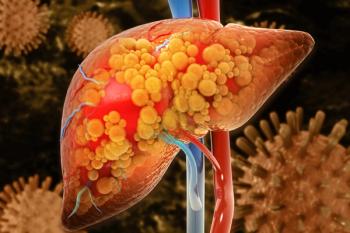
Hospital Management Involvement Impacts Health-Related Social Needs Program Adoption
Key Takeaways
- Engaged hospital leadership, especially involving multiple management levels, is crucial for adopting health-related social needs (HRSN) initiatives and promoting health equity.
- Senior and other management involvement increases the likelihood of implementing programs addressing food insecurity, transportation, and interpersonal violence.
Engaged hospital leadership enhances the adoption of health-related social needs initiatives, driving progress toward health equity and improved patient care, according to a new study.
When multiple levels of management were involved in
The findings suggest that engaged hospital leadership can help drive change and promote health equity through programs related to HRSNs such as health behaviors, transportation, food insecurity, interpersonal violence, or employment.
“In response to health disparities in the US, [CMS] released a Framework for Health Equity recommending increased hospital commitment and leadership engagement around screening for [HRSNs],” the authors explained. “Research indicates that committed and engaged health care leadership is necessary to advance health equity. However, little is known about senior management’s role in shaping hospital efforts to screen for and address unmet social needs to improve health equity.”
The CMS Framework for Healthy Communities highlighted 5 priorities for improving health for communities across the US.2 These included expanding data collection, reporting, and analysis; assessing gaps in CMS programs and policies; CMS support for health care providers, plans, and organizations who ensure patients are receiving high-quality care; promoting language access, health literacy, and person-centered services; and increasing access to health care for those with a disability. The priorities represent areas where CMS stakeholders indicated that CMS action is crucial to improve health in US communities.
The new study explored the association between hospital management involvement in health equity goals and the adoption of social needs initiatives using data from the 2022 American Hospital Association (AHA) Annual Survey.1 The survey assessed hospital characteristics, including HRSN program participation and management involvement.
The study included separate multivariable logistic regression analyses based on 9 individual HRSNs from the AHA survey and a composite measure of hospitals having at least 1 of 5 common HRSNs emphasized by CMS.
Out of 4288 acute-care hospitals, 2271 (53%) provided responses to items related to HRSN programs and health equity goals. Of the respondents, 93.9% offered any of 5 common HRSN programs prioritized by CMS, and 1475 (69.2%) reported both senior (defined as CEO or designated senior executive) and other management involvement.
Involvement of both senior and other management was linked with 5 of 8 HRSN programs, and having both management levels engages made hospitals more likely to offer any of 5 common HRSN programs (OR, 4.08; 95% CI, 2.19-7.60). Dual management involvement was also linked with initiatives related to food insecurity (OR, 2.99; 95% CI, 1.81-4.96), transportation (OR, 2.34; 95% CI, 1.43-3.84), interpersonal violence (OR, 2.22; 95% CI, 1.40-3.50), social isolation (OR, 2.28; 95% CI, 1.42-3.65), and housing (OR, 1.79; 95% CI, 1.13-2.86) compared with no management involvement. In hospitals where only senior management was involved, the likelihood of offering food insecurity and transportation programs was higher.
“Interestingly, hospitals where only senior management was involved were more likely to offer specific programs like food insecurity and transportation services, although these associations were generally smaller compared with when both senior and other management were engaged,” the authors wrote. “This suggests that while senior leadership plays a pivotal role, the inclusion of other managers and other organizational layers may be important to implement and sustain comprehensive social services.”
Larger hospital size (400 or more beds vs fewer than 50 beds), nonprofit status vs for-profit status, and nonreligious vs religious status were linked with higher odds of offering some, but not all, HRSN programs. Additionally, hospitals located in counties with more Black and Hispanic residents also had higher odds of offering housing and interpersonal violence programs, the study found.
The most commonly offered HRSN programs were related to health behaviors (86.1%), transportation (83.8%), food insecurity (82.7%), and interpersonal violence (69.6%), whereas the program offered least was employment (52.1%)
The study was limited by its inability to determine causality, as well as a relatively low response rate to survey items related to HRSN programs and health equity.
“This cross-sectional study found that hospitals with multiple layers of management engagement tended to adopt multifaceted strategies that address patients’ social needs, which are critical components of health equity frameworks,” the authors concluded. “These findings align with research emphasizing engaged hospital leadership in driving systemic change to promote health equity.”
References
1. Zein D, Cronin CE, Puro N, Franz B, McNeill E, Chang JE. Hospital decision-making and adoption of health-related social needs programs in US hospitals. JAMA Netw Open. 2025;8(6):e2516351. doi:10.1001/jamanetworkopen.2025.16351
2. CMS framework for health equity. CMS. Updated February 28, 2025. Accessed June 17, 2025.
Newsletter
Stay ahead of policy, cost, and value—subscribe to AJMC for expert insights at the intersection of clinical care and health economics.













































